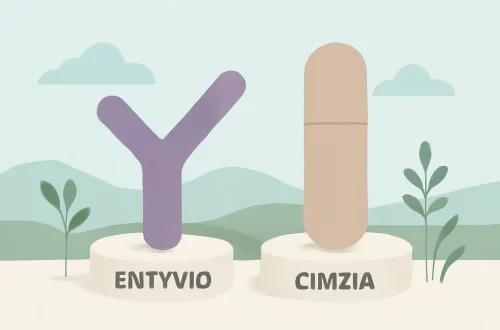
The Art of Expressing Emotions: Understanding the Moaning Girl Phenomenon
The expression of emotions is a complex and nuanced aspect of human experience, often manifesting in various forms and contexts. Throughout history, cultures have developed unique ways to convey feelings, whether through art, music, literature, or everyday interactions. One particularly intriguing phenomenon that has emerged in recent years is the “moaning girl” trend, which has captivated audiences across different platforms. This trend highlights a unique intersection of vulnerability, performance, and emotional expression, raising questions about its significance in contemporary society.
As we navigate through an increasingly digital world, the ways in which we communicate our feelings are continuously evolving. The moaning girl phenomenon serves as a reflection of this shift, illustrating how emotions can be articulated and shared in ways that resonate deeply with others. This trend has not only sparked conversations around emotional authenticity but also about the role of social media in shaping our emotional landscapes. The moaning girl becomes a symbol of the struggle to articulate feelings that are often difficult to express in traditional ways, inviting both empathy and critique from audiences.
Understanding the nuances of this phenomenon requires a closer examination of the cultural and psychological factors at play. By delving into the intricacies of emotional expression and the societal responses to it, we can gain valuable insights into the human experience and the importance of vulnerability in our lives.
The Psychological Underpinnings of Emotional Expression
Emotional expression is rooted in our psychological development and plays a crucial role in our mental health and relationships. From a young age, individuals learn to identify, interpret, and express their feelings, influenced by their environment and social interactions. The ability to express emotions is linked to emotional intelligence, which encompasses awareness, understanding, and regulation of one’s emotions.
The moaning girl phenomenon can be analyzed through the lens of emotional intelligence. Those who participate in this trend often demonstrate a high level of self-awareness, recognizing their emotions and the impact of those emotions on others. This self-awareness allows them to convey their feelings in a way that resonates with their audience, making their experiences relatable and authentic.
Moreover, the psychological concept of catharsis comes into play when discussing emotional expression. Catharsis refers to the process of releasing strong or repressed emotions, which can lead to a sense of relief. For many, sharing their struggles through the moaning girl trend provides a form of emotional release, offering them a platform to voice their feelings and connect with others who may be experiencing similar challenges.
However, it is essential to consider the potential pitfalls of this trend. While expressing emotions can be therapeutic, it can also lead to overexposure and vulnerability, especially in a digital context. The balance between authenticity and privacy becomes a critical consideration for those engaging in this phenomenon. Understanding the psychological factors behind emotional expression can help individuals navigate these complexities while fostering healthier emotional practices.
Social Media’s Role in Shaping Emotional Narratives
The rise of social media has transformed the way we communicate and share our feelings. Platforms such as TikTok, Instagram, and Twitter have become spaces where individuals can express their emotions, often in creative and engaging ways. The moaning girl phenomenon is a prime example of how social media influences emotional narratives, enabling users to connect through shared experiences.
In the realm of social media, emotions are often distilled into bite-sized content that is easily consumable. The moaning girl trend encapsulates this dynamic, as participants share short videos or posts that convey their feelings through sound and visual cues. This format allows for a rapid exchange of emotions, fostering a sense of community among those who resonate with the message.
Moreover, social media algorithms play a significant role in amplifying these emotional expressions. Content that elicits strong emotional reactions is more likely to be shared and promoted, leading to a cycle of exposure that can either validate or challenge the experiences being portrayed. This amplification can create a double-edged sword; while it can promote empathy and connection, it can also lead to the trivialization of serious emotions.
The impact of social media on emotional expression also raises questions about the authenticity of these portrayals. Are individuals genuinely expressing their feelings, or are they performing for an audience? This question is particularly relevant in the context of the moaning girl phenomenon, where the line between vulnerability and performance can become blurred. Understanding the role of social media in shaping emotional narratives is crucial in analyzing the broader implications of trends like the moaning girl.
Cultural Implications of Vulnerability in Expression
The moaning girl phenomenon not only reflects individual emotional experiences but also raises broader cultural questions about vulnerability and the acceptance of emotional expression. In many cultures, there exists a stigma surrounding the open display of emotions, particularly for certain demographics such as men or individuals from specific cultural backgrounds. The emergence of trends like the moaning girl challenges these norms, encouraging a more open dialogue about feelings and emotional struggles.
This shift toward accepting vulnerability can be seen as a response to the pressures of modern life, where individuals often feel isolated in their experiences. The moaning girl trend provides a platform for individuals to share their burdens, fostering a sense of connection and understanding among those who participate. This cultural movement can be empowering, as it encourages individuals to embrace their emotions and share their stories without fear of judgment.
However, the cultural implications extend beyond personal expression. The moaning girl phenomenon also invites discussions about the representation of women in emotional contexts. As this trend often features young women expressing their feelings, it raises questions about how society perceives female vulnerability. Are these expressions being celebrated as a form of empowerment, or are they being reduced to mere entertainment? The cultural narrative surrounding the moaning girl highlights the need for a more nuanced understanding of emotional expression and its implications for gender dynamics.
As we explore the complexities of the moaning girl phenomenon, it becomes clear that emotional expression is not just a personal endeavor; it is also a cultural and societal reflection. By examining these layers, we can better understand the significance of vulnerability in our emotional narratives and the ways in which they shape our interactions with others.
The Future of Emotional Expression in a Digital Age
As we move further into the digital age, the landscape of emotional expression continues to evolve. Trends like the moaning girl phenomenon serve as a snapshot of how individuals grapple with their emotions in a world that is increasingly interconnected yet often isolating. The future of emotional expression will likely be shaped by advances in technology, shifts in cultural norms, and ongoing dialogues about mental health.
One potential direction for emotional expression is the integration of technology into therapeutic practices. With the rise of teletherapy and mental health apps, individuals may find new ways to articulate and process their emotions. These platforms can provide valuable resources for emotional expression, allowing users to explore their feelings in a safe and supportive environment.
Moreover, the normalization of emotional expression in public spaces, particularly through social media, may lead to a greater acceptance of vulnerability across various demographics. This cultural shift could foster healthier dialogues around mental health and emotional well-being, encouraging individuals to seek help and support when needed.
However, challenges remain as the digital landscape continues to expand. The potential for misrepresentation and misunderstanding in emotional expression persists, highlighting the need for critical engagement with the content we consume. As we navigate this terrain, it will be essential to advocate for authenticity and empathy in our emotional narratives, ensuring that expressions of vulnerability are met with understanding and support.
In conclusion, the moaning girl phenomenon encapsulates a broader cultural movement toward embracing emotional expression in all its forms. By understanding the psychological, social, and cultural implications of this trend, we can foster a more compassionate dialogue around emotions and their place in our lives.
**Disclaimer:** This article is not intended as medical advice. For health-related concerns, please consult a qualified healthcare professional.




